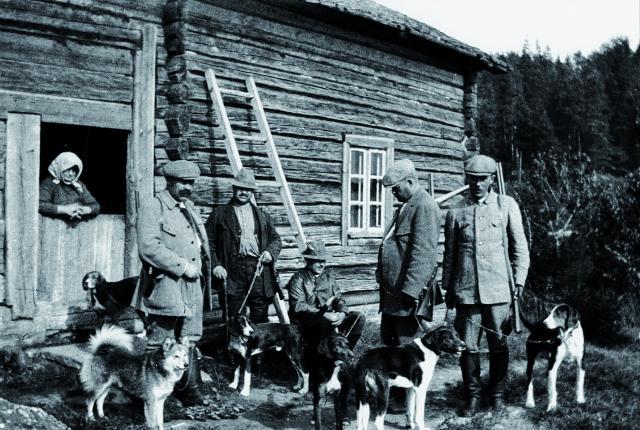The Finnish Kennel Club’s history
Organised kennel activities commenced in Finland on 11th May 1889, when some twenty people convened in Helsinki to establish the bilingual Finska Kennelklubben – Suomen Kennelklubi.

Organised kennel activities commenced in Finland on 11th May 1889, when some twenty people convened in Helsinki to establish the bilingual Finska Kennelklubben – Suomen Kennelklubi.

The meeting elected an executive body, which was authorised to draft by-laws for the association. The proposed by-laws were approved with minor alterations on 28th September and the Senate confirmed them on 31st October 1889. One year later, the association had grown from its twenty founding members to a 168-strong group.
Organised Finnish kennel activities were established at the initiative of active hunters and to serve the needs of hunting. The mission of the organisation was defined as “the promotion of better dog-keeping in our country by increasing general awareness of pedigree dog hobby activities and by disseminating information about the benefits of pure-bred dogs.” The agreed-upon task was to “organise dog shows and field trials, establish a cynological library, arrange club soirées, import pure-bred stud dogs and edit a pedigree book.”
The first dog show took place in Helsinki in 1891. The first hunting trial was meant for hound dog breeds and it took place in Turenki in 1893. The member publication, magazine Koiramme was established in 1896.
Kennelklubi's activities were put on the back burner for the duration of the First World War and dog registration numbers collapsed. Rabies was also thinning the dog population. Once Finland gained independence in 1917, kennel activities began to gradually expand and diversify.
In 1927, Kennelklubi revised its by-laws and started to accept other associations as members. Kennelklubi supervised their trials and authorised their by-laws. The same practice is observed to this day.
In 1934, a group of active dog enthusiasts convened in Hämeenlinna to establish the Finnish-language Suomen Kennelliitto to serve as an alternative to Kennelklubi. The background to the founding of a second canine organisation was the founders' agreement that the rules of Kennelklubi were too rigid and old-fashioned. Personal differences, language politics and the elitist tone of Kennelklubi also played a part. The membership of Suomen Kennelliitto surpassed that of Kenneklubi even before the outbreak of the Second World War.
The Second World War made kennel activities considerably more difficult. Food shortages reduced dog numbers and the state of war restricted or prevented trials and shows from being organised. After the war, things were slow to improve, as almost everything was in short supply New dogs would have been needed from overseas, but currency restrictions meant that both their importing and the exporting of Finnish dogs was only possible in the form of gifts or as barter.
Finska Kennelklubben and Suomen Kennelliitto merged into a single organisation in 1962.
In 2014, the Finnish Kennel Club celebrated its 125-year journey.
Explore the Finnish Kennel Club’s museum collections displayed in the online Finnish Canine Museum – a museum that is unique on a global scale.